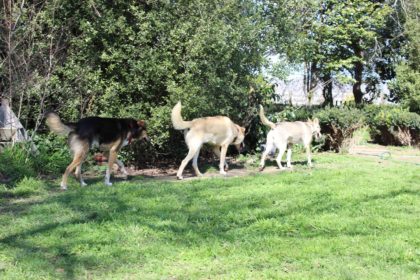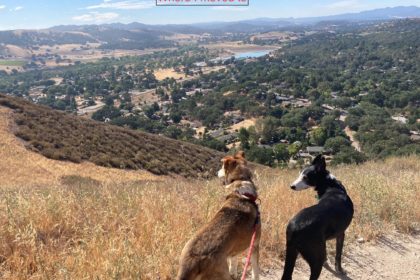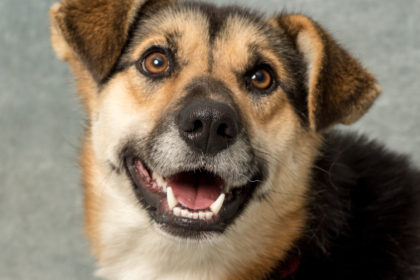As you now know, my aborted snow machine excursion meant that I would not be out at the mid-course checkpoint with the teams, but instead relegated to waiting at the start/finish line in Paxson for the duration of the race, estimated to be between 36 and 48 hours.
 Although the lodge at Paxson may not be the kind of quaint, fancy place you might picture when you think of a wilderness inn, it is a warm and very serviceable oasis in an extremely remote part of the harsh Alaskan interior. The folks who run it are all very friendly and they really went out of their way to accommodate the extremely challenging demands of hosting a sled dog race. Plus, you’ve just got to appreciate folks whose sense of humor created the sign out front!
Although the lodge at Paxson may not be the kind of quaint, fancy place you might picture when you think of a wilderness inn, it is a warm and very serviceable oasis in an extremely remote part of the harsh Alaskan interior. The folks who run it are all very friendly and they really went out of their way to accommodate the extremely challenging demands of hosting a sled dog race. Plus, you’ve just got to appreciate folks whose sense of humor created the sign out front!
The biggest problem for all of us who remained at the lodge — team handlers, race officials, veterinarians, friends and family of mushers, etc. — is that we really had very little access to information. The teams are all so far “out there” on a race that even in these days of hi-tech communications we have no direct contact with them. All we had, in fact, was one dial-up connection to the race website which was constantly monitored but seldom updated. Any of you at home had the same information we did, what little there was of it. As a result, there was always a great deal of speculation going on in the lodge about which teams were where, what strategies they were using, when they might get to or leave the checkpoint, etc. After a while it all becomes just a crazy din of speculation, so you find other things to do.
I spent some time preparing these posts so that they would be ready to go as soon as I could get back online at the Kennel. I also helped take care of some dropped dogs, swapped experiences and techniques with other handlers, shared stories with other bloggers, etc. Mostly, though, I found myself wondering — and worrying — about the teams. The few reports we got from returning snow machiners and a few mushers who had scratched were all consistent: the trail was very difficult, the winds were extremely high and the temperatures were brutally cold — as low as -50 in places!
Not having reliable or timely information, you can’t make any kind of “plan” to be prepared for when your teams return. For example, you know that they will need hot “soup” as soon as they get in, but you can’t make it too soon or it will be cold by the time they arrive. You want to be at the finish line when they arrive, but you can’t just stand around in the cold waiting for them. As a consequence, you find yourself napping in a chair for a few minutes then getting up to see if there is any new information on the website. Not finding any, you suit up and go outside to check with the race officials to see if they’ve heard anything. Not getting any satisfaction there, you wander over to the trucks to make sure everything is still in order. Then, you take a dropped dog or two out for a quick potty break. After that you find yourself back in a chair, nodding off to the din of endless — and boisterous — speculation.
I hope this doesn’t sound like I’m complaining, because I’m certainly not. My intention is to share just a bit of “another side” of dog sled racing. The mushers and the dogs have the hard job. They’re “out there” in the wild, the dark, the wind and the cold. All we handlers have to cope with is waiting, wondering and worrying.









Just a quick note: I was the web lady updating the stats for the Gin Gin 200 this year and we were on top of times as they came in to us, the problem could have been the internet server Paxson was using. Each server refreshes as they see fit, they may not refresh as often as we were updating. Once we uploaded new stats we checked to be sure it was going live and it was with the server we were using (STARBAND), but for some reason Paxson was not???? I assure you we did all we could to keep the outside world up to date on this race. Not complaining just giving you the rest of the story!
cool blog